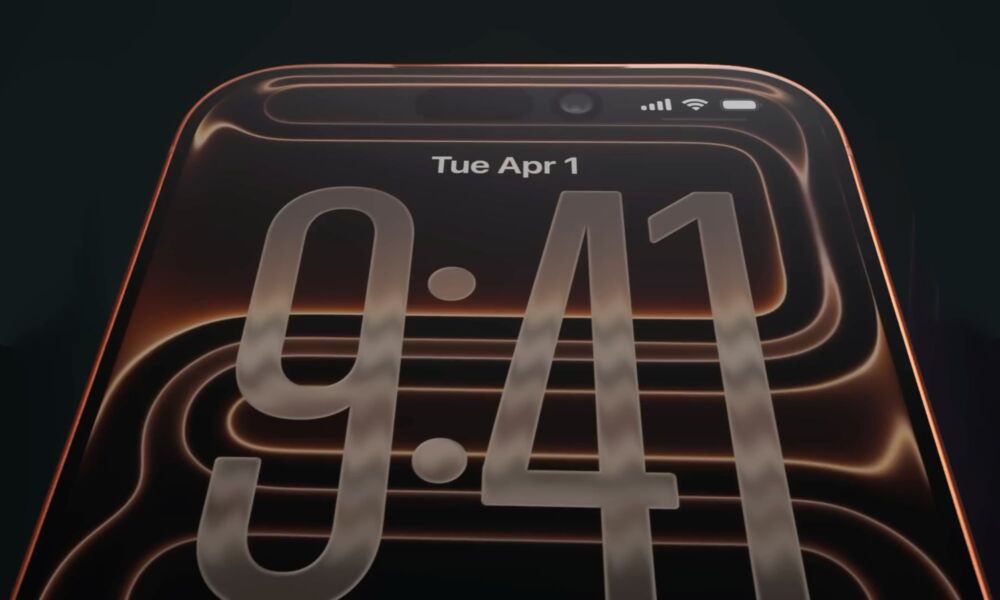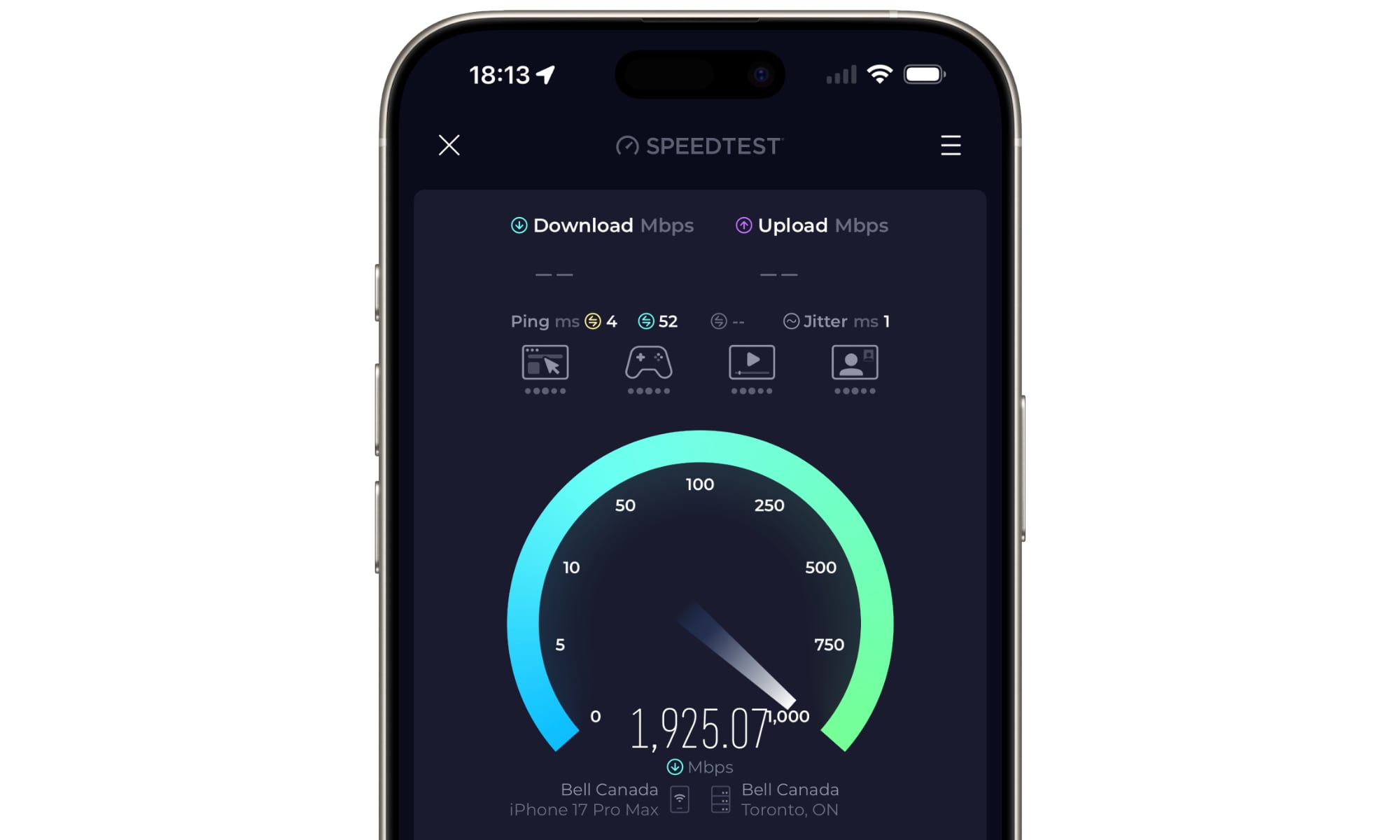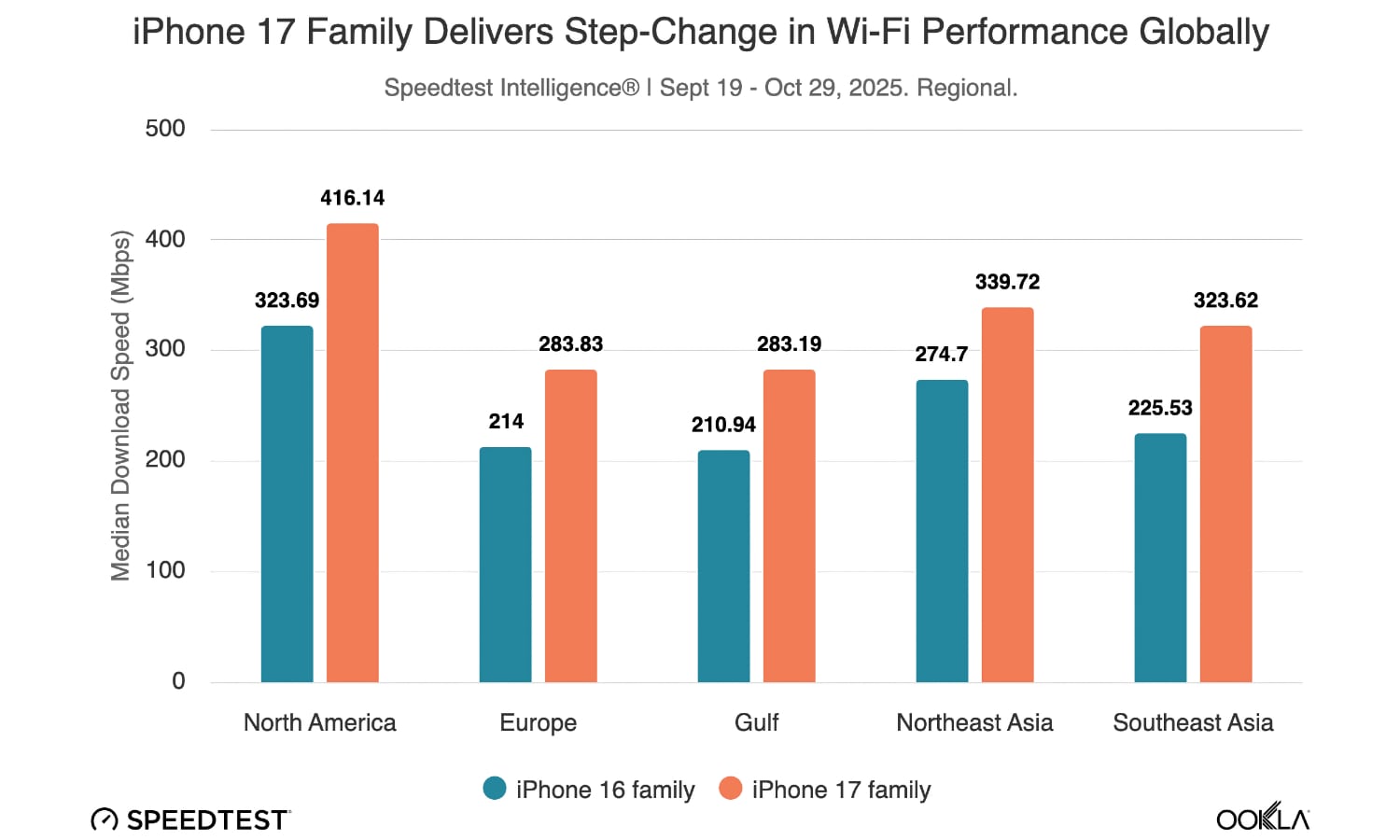Apple’s N1 Chip Is the iPhone 17’s Best Hidden Upgrade
 Apple
Apple
Toggle Dark Mode
One of the more subtle changes in this year’s iPhone lineup was Apple’s switch to its own in-house Wi-Fi and Bluetooth chip. While this had been rumored in tech news circles for several months, and was highlighted by Apple during its launch event, it’s definitely not something that’s likely at the top of your mind when considering one of the new iPhone models — but perhaps it should be.
While Apple has designed its own processors for the iPhone from the start, the company more recently decided that it wants to have all of its most important silicon developed in-house. Several years ago, reports began circulating that Apple was working on its own 5G modem chip. Around the same time Intel abandoned the business which made Qualcomm the only game in town — much to Apple’s chagrin.
Apple reached the first major milestone on that long road this year when it debuted its first C1 5G modem chip in the iPhone 16e. However, cellular chips weren’t the only thing it had been working on. Late last year, we began seeing reports that Apple was also working on a chip to power the rest of its communication stack — a new Wi-Fi and Bluetooth chip that would replace the Broadcom silicon typically used in Apple products.
It’s unclear whether Apple managed to cloak this project in more secrecy or simply do it faster — probably a combination of both — but the initiative bore fruit when Apple revealed the N1 chip in September at the core of its entire iPhone 17 lineup, and the iPhone Air.
At first glance, the N1 chip may not seem all that exciting. After all, other than notching things up to Bluetooth 6, the base specs are pretty similar to what the Broadcom chips brought to last year’s iPhone 16 models. However, Apple promises that thanks to its more integrated design and ability to work hand-in-glove with the new A19 chips, we can expect better support for core Apple features like Personal Hotspot and AirDrop — plus better power efficiency.
The N1 in the Real World
Anecdotally, I’ve already seen some measurable improvements since upgrading to an iPhone 17 Pro Max — and since I was coming from last year’s iPhone 16 equivalent, it hasn’t otherwise been a huge upgrade.
For example, Bluetooth works faster and more reliably across the board. My AirPods Pro connect near-instantaneously when I switch to them in the middle of a call, the August Smart Lock Pro on my front door is always unlocked when I reach it (thanks to August’s Bluetooth proximity unlocking feature), and my new iPhone connects to wireless CarPlay in my 2021 Nissan Rogue seconds after I turn on the car.
These are noticeable quality-of-life improvements. They’re all things that worked more slowly with my iPhone 16 Pro Max, creating delays that were just enough to be mildly annoying, such as standing in front of my door waiting for it to unlock, or missing a few words in a call while putting in my AirPods.
While the N1 chip supports Bluetooth 6, it’s not the new standard that’s making the difference, since none of the devices on the other end are using it. Instead, I suspect it’s Apple’s significantly improved power management that ties the N1 to the A19 Pro chip for better efficiency, which means the Bluetooth radio doesn’t need to be fully put to sleep to save power. “We can build in co-designed interfaces into that N1 that allow us to do processing on the SoC at extremely low energy for background tasks,” Tim Millet, Apple’s vice president of platform architecture, told CNBC in September.
It’s not just Bluetooth that’s improved. Wireless CarPlay uses a combination of Bluetooth for the initial handshake and Wi-Fi for the actual communications, so the improved stability of the connection comes from the N1’s Wi-Fi improvements, which have also shown themselves in other ways, such as increased speeds.
In my own experience, my iPhone 17 Pro Max can now hit 1.9 Gbps when communicating over Wi-Fi 7 with my Eero Max 7.
Of course, those speeds require close proximity to the router — I typically only get around 700 Mbps when roaming around the house — but it’s still around 25% faster than what my iPhone 16 Pro Max could do.
It seems my own experiences aren’t unique. Last week, Ookla, the company behind the popular Speedtest app, published a report showing the N1 chip “delivers material performance improvements,” delivering median download speeds that are up to 40% higher than they were on the Broadcom-equipped models.
The iPhone 17 family delivered higher download and upload speeds on Wi-Fi compared to the iPhone 16 across every studied percentile (10th, median and 90th) and virtually every region. During the study period, the iPhone 17 family’s global median download of 329.56 Mbps was as much as 40% higher than the iPhone 16 family’s 236.46 Mbps. Upload speeds improved similarly, jumping from 73.68 Mbps to 103.26 Mbps.
Ookla
As with all of Ookla’s analyses, the study used globally crowdsourced data from Speedtest users, in this case collected between September 19 — the day the new iPhone models went on sale — and October 29. It also compared the iPhone 17 models to other flagships such as the Google Pixel 10 Pro and Samsung Galaxy S25 series.
In an interesting twist, the iPhone 17 models outperformed their Android rivals despite lacking the 320 MHz channel support that’s more common on many of those flagships. That’s likely because only the priciest Wi-Fi 7 routers offer 320 MHz channels, which levels the playing field for now. That will eventually change, but it will likely be years before these will be mainstream enough to move the median speeds ahead.
It’s also worth keeping in mind that today’s speeds are already overkill for the vast majority of iPhone users; while gigabit numbers are fun to look at on speed tests, a 4K Netflix stream only requires 25 Mbps, and a high-quality FaceTime call needs less than 10 Mbps. However, just like multi-gigabit broadband connections or mmWave 5G, these improvements aren’t about raw speed, but rather headroom — ensuring that there’s enough bandwidth to provide rock-solid connections for more users at greater distances. That’s where Wi-Fi 7 really matters, and it’s where the N1 chip most significantly raises the bar.










